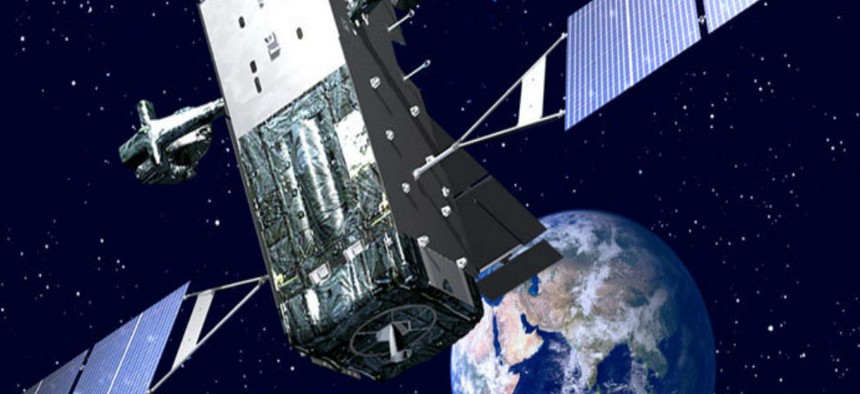Air Force explores commercial satellite resiliency
The service is evaluating new ways to protect communications from jamming and interference.
In a case where more may equal less, the Air Force is evaluating ways that increased integration of commercial technology with military satellite systems may help protect communications and reduce vulnerabilities for hacking or jamming.
“There is no one node that is invulnerable to attack,” Winston Beauchamp, Deputy Under Secretary of the Air Force for Space, told Defense Systems in an interview.
The concept is to increase the number of aircraft, drones, routers and fixed ground stations to achieve a greater measure of resiliency by using commercial technology and high-throughput satellites.
Rick Lober, Vice President of Hughes Defense Systems, said that the military may lease more SatCom bandwidth from commercial suppliers such as Hughes, ViaSat or Intelsat, among others. Using more providers is another path to diversity and greater protection for satellite communications.
The service is conducting an “analysis of alternatives” aimed at exploring the range of technological options to prevent jamming, interference and other interruptions.
“Potential adversaries have taken notice of how we use space and have taken steps to replicate those capabilities for their own use and to devise capabilities to take them away from us if they ever got into a conflict with us,” Beauchamp added.
Hughes Defense Systems is one of several industry participants contributing to the Air Force effort to increase security in beyond line-of-sight communications.
“We continue to monitor the DOD interest in protected communications using wide band satellites,” Lober said.
Dispersion of satellites and the deployment of numerous differently configured space systems can build in resiliency and redundancy to protect communications, he added.
“High-throughput and improved networking modem technology can solidify protected communications,” Lober explained.
High-throughput satellites can generate as much as 100 times the capacity of traditional Ku band satellites.
Yet another advantage with high-throughput satellites involves an increased use of smaller “spot” beams instead of one large beam, using the spectrum for multiple beams on the same frequency band designed to create more jam resiliency, he explained.
“Four gigahertz of the frequency spectrum can generate a beam that covers one-third of the earth. You can divide that into 100 beams, reuse the spectrum and have a lot more capacity,” Lober said.
Also, building routers more directly into satellite systems can help fixed ground stations and aerial nodes pick up a signal and convert it to IP packets.
NEXT STORY: Navy looks to modernize procurement system





